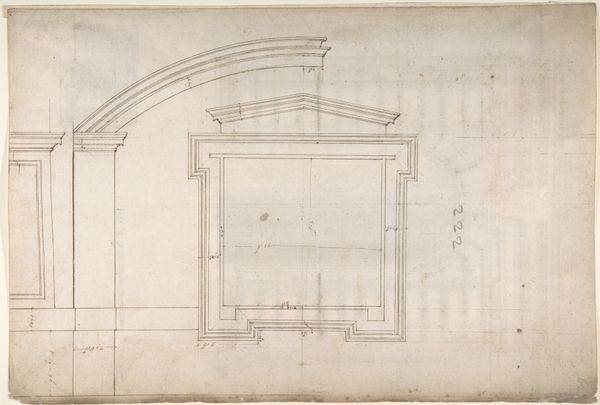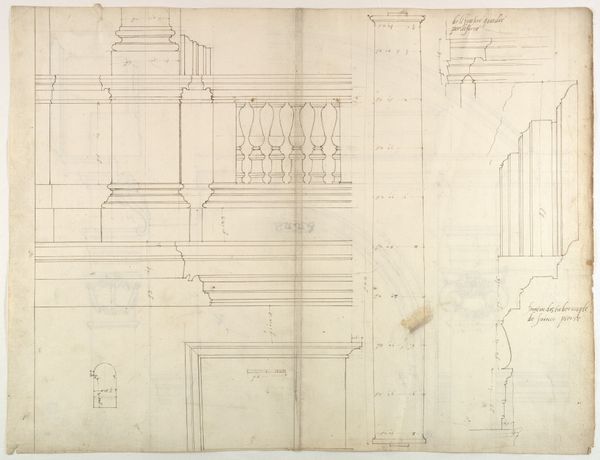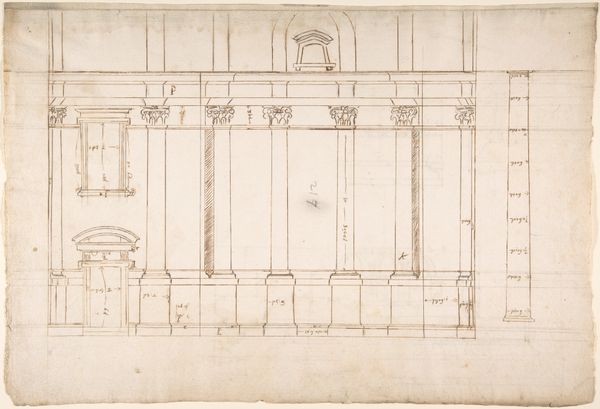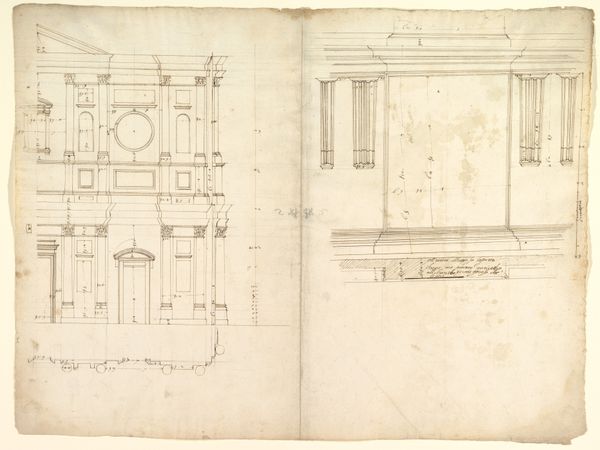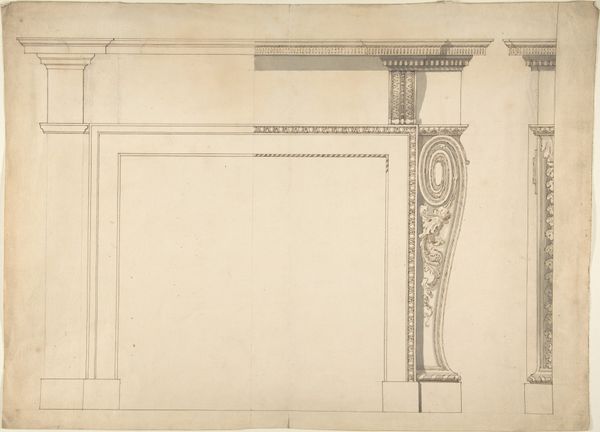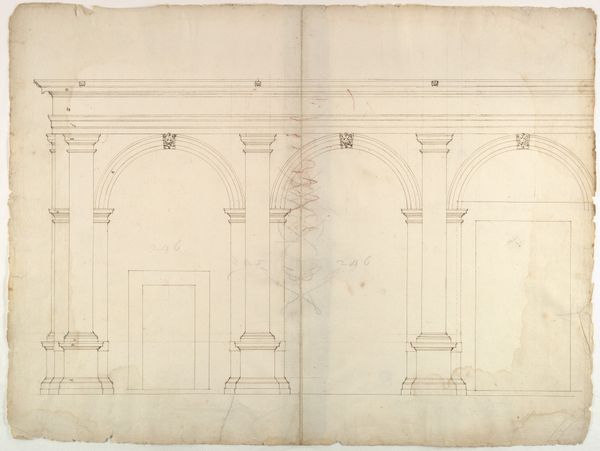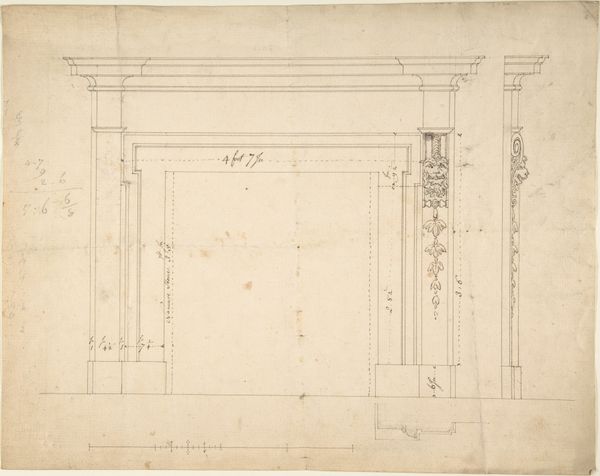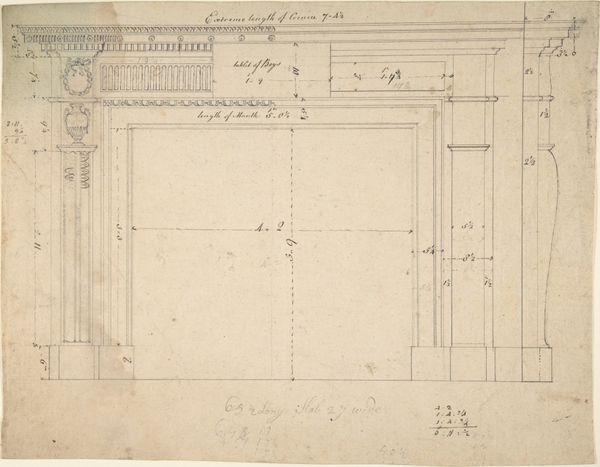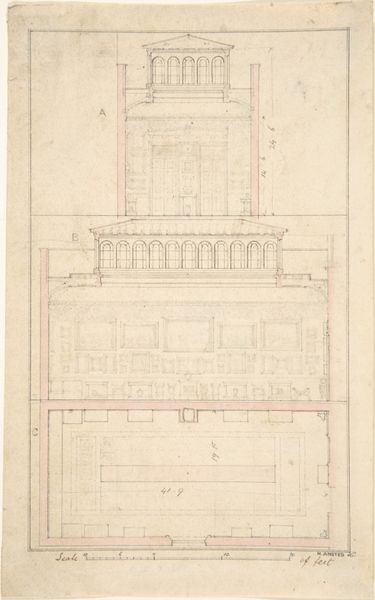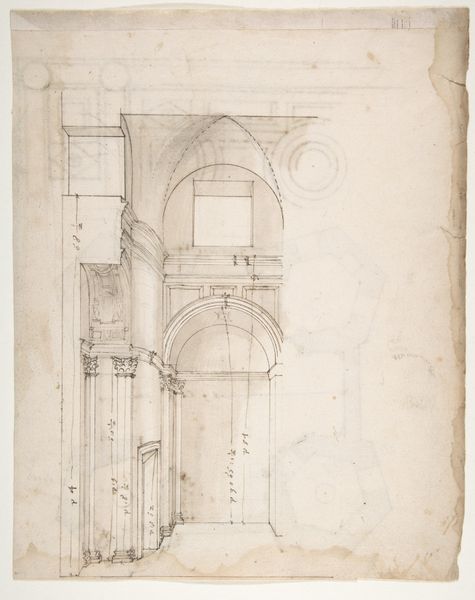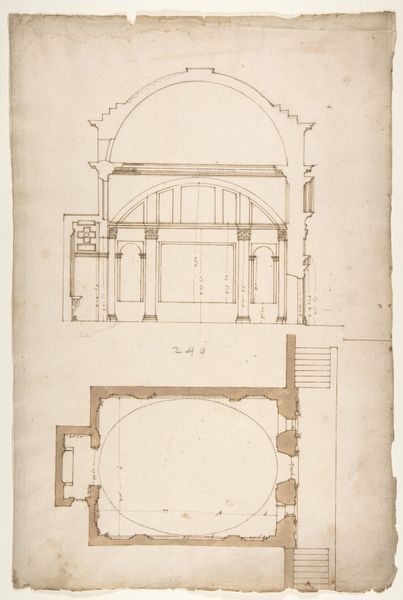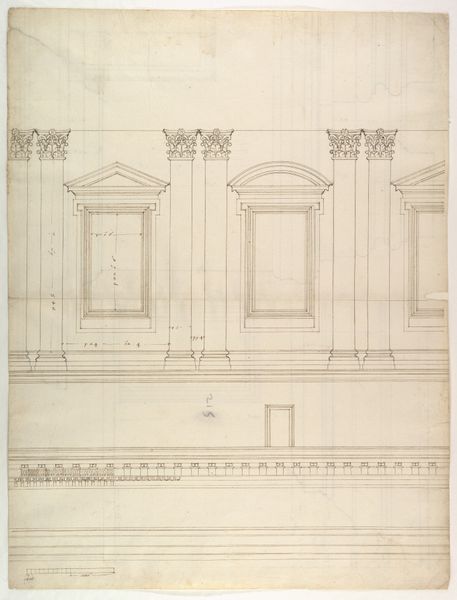
St. Peter's, attic, window, elevation (recto) St. Peter's, apse, plan; window, cornice, elevation profile; arch frame, elevation profile (verso) 1500 - 1560
0:00
0:00
drawing, print, architecture
#
drawing
# print
#
form
#
11_renaissance
#
geometric
#
line
#
italian-renaissance
#
architecture
Dimensions: sheet: 23 5/16 x 16 15/16 in. (59.2 x 43.1 cm)
Copyright: Public Domain
Curator: Let’s delve into this intriguing architectural study, "St. Peter's, attic, window, elevation (recto) St. Peter's, apse, plan; window, cornice, elevation profile; arch frame, elevation profile (verso)." It's a drawing, likely a print, created sometime between 1500 and 1560 by an anonymous artist of the Italian Renaissance. Currently, it resides here at The Met. Editor: Wow, that's a mouthful for a title! But immediately, I’m drawn to its delicate lines. It’s like seeing the ghost of an idea. There’s something beautifully vulnerable about a blueprint before it becomes bricks and mortar, isn’t there? Curator: Absolutely. And consider the power dynamics inherent in these kinds of plans. This isn't just about aesthetics; it’s about articulating power through architectural precision and a very particular kind of Renaissance vision. St. Peter's itself represents papal authority made manifest. What do the meticulous geometrical notations signify in that broader context? Editor: You know, when you put it like that, the shell motif at the bottom, which I initially found simply decorative, seems loaded. Is it a baptismal reference, connecting the grand design to notions of religious initiation? Or am I just being fanciful? Curator: Fanciful maybe, but that intuition shouldn't be dismissed outright. Renaissance architecture embraced symbolism, often embedding theological and humanistic ideals within the very fabric of their designs. We must acknowledge that these architectural plans represent more than just geometric calculations, but encoded aspirations, social hierarchies, and ideological agendas. Editor: I guess for me it is also a moving peek behind the curtain, into the creative chaos, before things are neat and tidy. It almost makes the final, glorious structure feel less intimidating, somehow more human. Curator: A great point. The Renaissance can appear monolithic in its grandeur. Looking closely at this drawing reminds us of the multifaceted individuals, agendas, and sociopolitical tensions involved in bringing such visions to life. Editor: I love how a seemingly simple blueprint opens up such vast landscapes of thought!
Comments
No comments
Be the first to comment and join the conversation on the ultimate creative platform.
